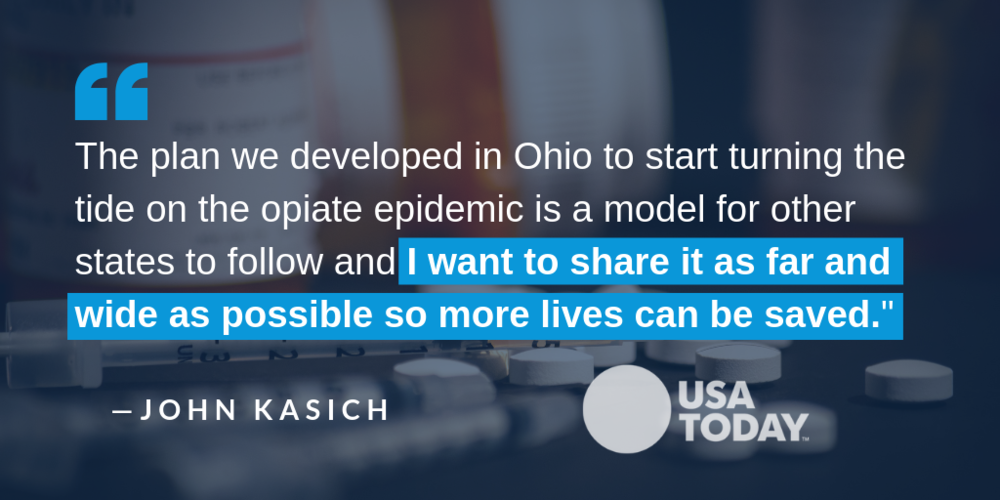John Kasich authored the following op-ed for USA Today.
For almost a decade Ohio was on the frontlines in America’s battle against opiates. Our legacy of industrial labor, struggling economy, central location with easy interstate connections and lax prescription drug policies created a perfect storm of demand, access and government inaction that left a wake of addiction, overdose and death. As the governor of Ohio from 2011 to 2019, the opiate epidemic was constantly on my mind. The disease of addiction lurked in every community: stealing loved ones from families, damaging the employment base and altering the very fabric of our communities. How could a state and people with so much to offer ever unleash their potential with this holding us back?
Let me begin by telling you that Ohio’s collective actions have begun to demonstrate promising results. Recently-released preliminary data from the federal Centers for Disease Control and Prevention shows that opiate overdoses in Ohio fell by four times the national average in 2018 — a decline of 22%. At a time when we often struggle to find good news and wonder if government can do anything but fail, we can take comfort in these facts because they were so very hard to achieve.
The plan we developed in Ohio to start turning the tide on the opiate epidemic is a model for other states to follow and I want to share it as far and wide as possible so more lives can be saved. Ohio’s plan involves every part of state government and partnerships with local government and schools. It involves prevention, law enforcement and community groups, treatment and research. Ohio’s fight against opioid epidemic sets itself apart as a national model.
America’s largest drug companies saturated the country with 76 billion oxycodone and hydrocodone pain pills from 2006 through 2012 and a generation got hooked. When I took office, Ohio’s prescription drug regulations were lax compared to many other states and we had little ability to monitor or defend against abuses. We went about quickly fixing that, since opiates are often the gateway to other powerful drugs.
We shut down pill mills, prosecuted crooked health care professionals and partnered with Ohio’s medical community to change prescribing guidelines to dial back opiate dispensing to get pills off the street. Our Board of Pharmacy deployed a comprehensive electronic monitoring system to track all prescribing and dispensing to immediately identify suspected law-breaking providers and doctor-shopping patients. These early steps led to a nearly 30 percent decrease in opiate prescriptions and helped keep 225 million doses away from potential abusers between 2012 and 2017.
While this helped us slow the growth of the problem, treating those already in the grip of addiction took resources Ohio didn’t have. We were able to take the leap forward we needed by accepting new funds from the federal government to expand Medicaid to help another 500,000 adults needing mental health and addiction services. The new access to substance abuse and mental health services this created was instrumental in helping those living with addiction start the long journey to sobriety, health and self-sustainability. It continues today.
Stopping the epidemic’s spread couldn’t happen without educating young people, which is why we launched an evidenced-informed curriculum to support youth resilience and effective parent engagement. Studies have shown that when credible adults talk with kids directly about the dangers of drugs and alcohol, the youth are as much as 50 percent less likely to ever experiment with these substances.
Ohio’s fight against the opioid epidemic has made hard-fought progress. While we are painfully aware of the trauma inflicted by addiction in our communities, the recent data support the fact that our investment of time, resources and hope has made a difference: lives are being saved and pain is being avoided. Holding onto this progress takes vigilance, however, and current and future leaders cannot take their foot off the gas. It is our responsibility to share what we know works to help places begin to make progress faster and perhaps avoid some of the same problems Ohio faced. Amid the darkness there can be the light of hope, but it takes vigilance, creativity and unity to keep it burning. It’s burning brighter in Ohio. Let’s spread the light.
View the op-ed on USA Today here.
For more of the latest updates in the industry click here.






